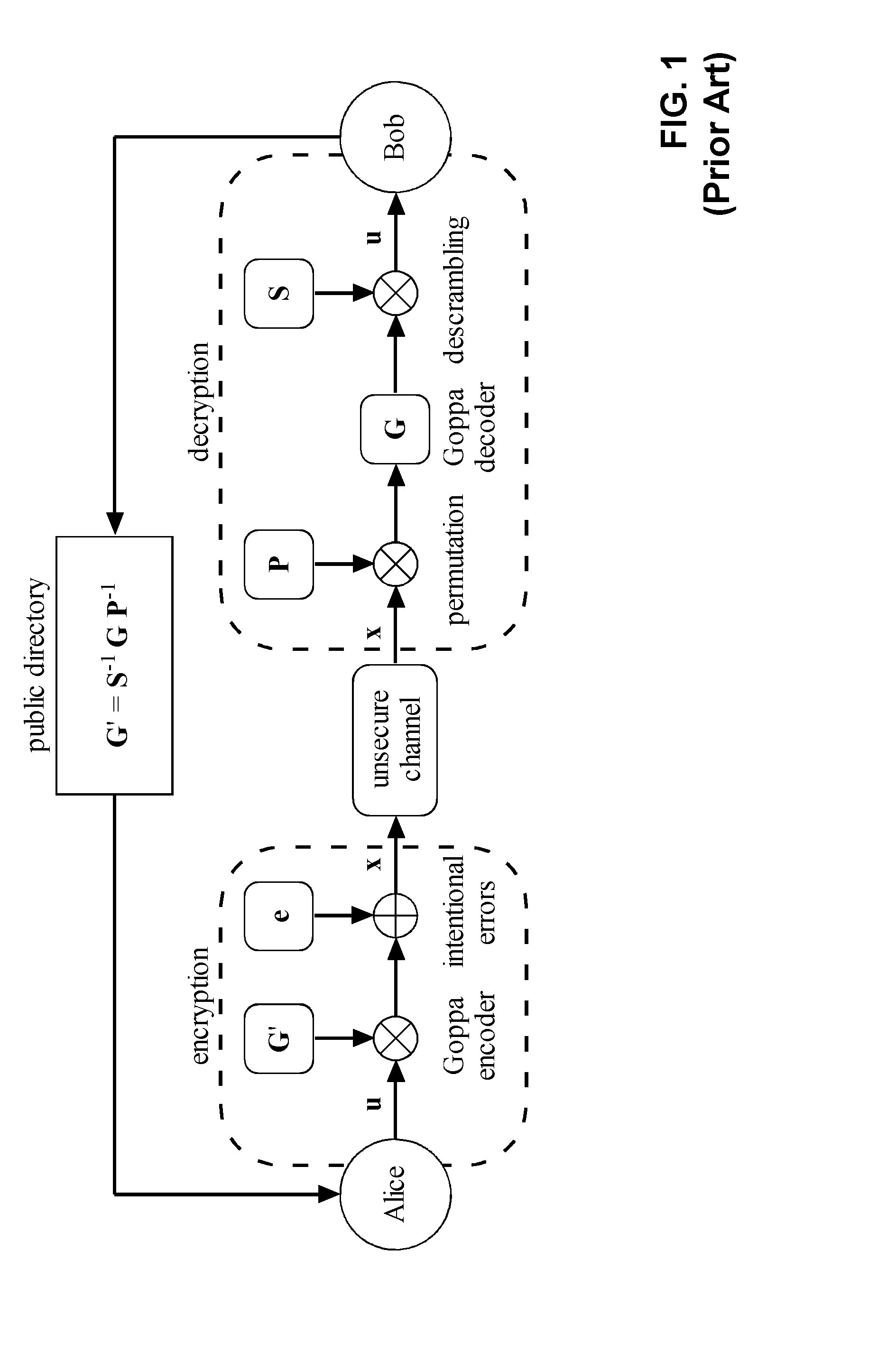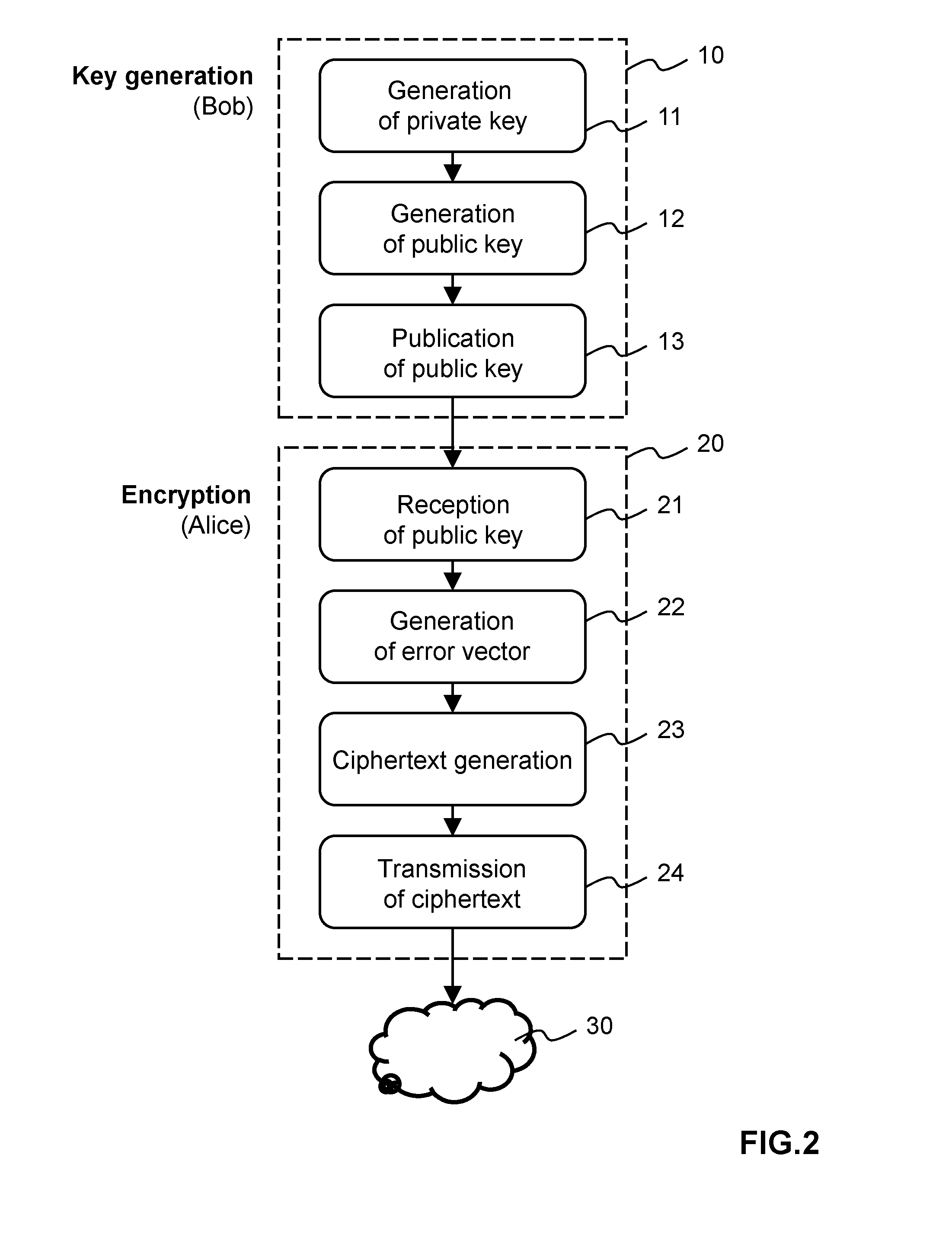Method and apparatus for public-key cryptography based on error correcting codes
a public-key cryptography and error-correcting technology, applied in electrical devices, digital transmission, securing communication, etc., can solve the problems of low code rate and large key size, expose the system to dangerous flaws, and no polynomial-time attack able to break it up to now, so as to improve the security level of a cryptosystem and shorten the public key
- Summary
- Abstract
- Description
- Claims
- Application Information
AI Technical Summary
Benefits of technology
Problems solved by technology
Method used
Image
Examples
example 1
Instance with 80-Bit Security
[0096]The security level is commonly measured as the number of elementary operations (or work factor) of the most efficient attack. With reference to Ref [3], to reach a security level >280, the (1632, 1269) Goppa code is suggested, resulting in a public-key size of 460647 bits (that is the lowest possible value for this code, obtained by storing the non-systematic part of H, as in the Niederreiter cryptosystem). With the variant according to the present invention, we can include the RS code with n=255, k=195, t=30, having a security level of 284.18 (estimated as the work factor of the attack procedure described in [17]). The public key size for this code, if we store the 195×255 matrix G′ and a 1×255 vector a, both with elements over GF(256), is (195+1)·255·8=399840 bits, that is, about 13% less than (the minimum size of) that obtained by the revised McEliece cryptosystem [3]. By exploiting the Niederreiter variant of the system according to the present...
example 2
Instance with High Security
[0097]We consider the Goppa code suggested in Ref [3] to achieve a security level ≧2128 which has n=2960, k=2288, yielding a key length of 1537536 bits. In the system according to the present invention, we can adopt an RS code with the same rate (0.77), defined over GF(512), having n=511, k=395, t=58. The corresponding size of the public key, including a 1×511 vector a, is (395+1)·511·9=1821204 bits (that is slightly bigger than the one in the Niederreiter system proposed in Ref [4]). By exploiting the Niederreiter variant of the system according to the present invention, a systematic H′ can be used as the public key, and it can be represented by only storing its non-systematic part, that is, 416979 bits. This results in a reduction of about 73% with respect to the Goppa-based solution. Furthermore, by using the present solution, the security level grows up to 2155.89 (estimated on the basis of the attack procedure described in Ref [17]). This value remain...
PUM
 Login to View More
Login to View More Abstract
Description
Claims
Application Information
 Login to View More
Login to View More - R&D
- Intellectual Property
- Life Sciences
- Materials
- Tech Scout
- Unparalleled Data Quality
- Higher Quality Content
- 60% Fewer Hallucinations
Browse by: Latest US Patents, China's latest patents, Technical Efficacy Thesaurus, Application Domain, Technology Topic, Popular Technical Reports.
© 2025 PatSnap. All rights reserved.Legal|Privacy policy|Modern Slavery Act Transparency Statement|Sitemap|About US| Contact US: help@patsnap.com



